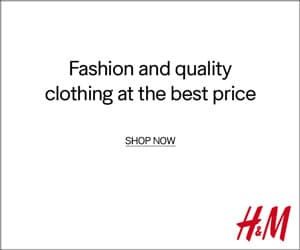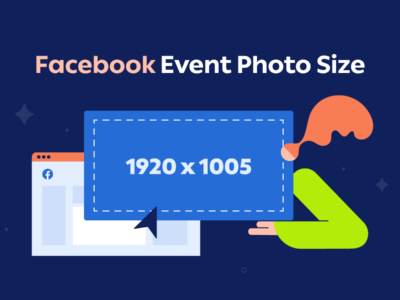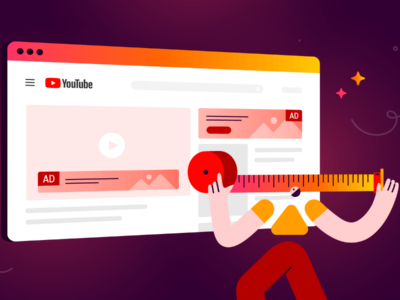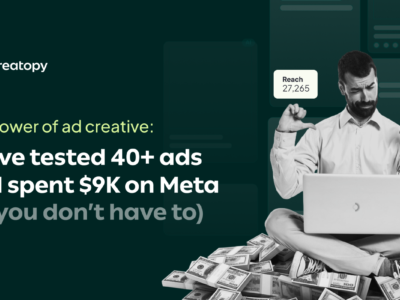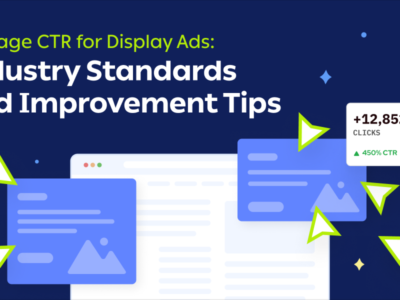Internet retailing (eCommerce) is the fastest-growing market in the retail industry.
Not only that, but while retail sales in brick-and-mortar stores have been dropping over the last few years, online retail has grown massively, including retail advertising expenses.
This consumer switch affected big brands predominantly (some recent examples are Sears and Toys “R” US) and led to a surprising statistic: across the US, almost 6,000 stores closed in the first three months of 2019.
Don’t get alarmed yet if you run a brick-and-mortar store.
The chances are that consumers will never entirely abandon offline shopping, but as we can see, they already started to favor online shopping more.
When you have an offline and online presence, retail advertising needs to be part of the marketing mix. This is going to help you expand your reach, drive more (foot) traffic, and convert visitors into customers.
What is Retail Advertising?
Retail advertising is the process by which retailers use store advertising (online and offline) to drive awareness and interest in their products and generate sales from their target audience. Through advertising, a retailer attempts to influence their audience to take a specific action.
Effective retail advertising not only highlights the features and benefits of products but also creates an emotional connection with the audience.
I can go even further and say that we cannot talk about a retail advertising definition without discussing the 4 P’s of retail marketing, as they are inherently connected. Retail marketing is the comprehensive process that entails everything from how you create the product, how you price it, where you place it for distribution, and how you promote it, which directly ties into the strategies and activities used in retail advertising.
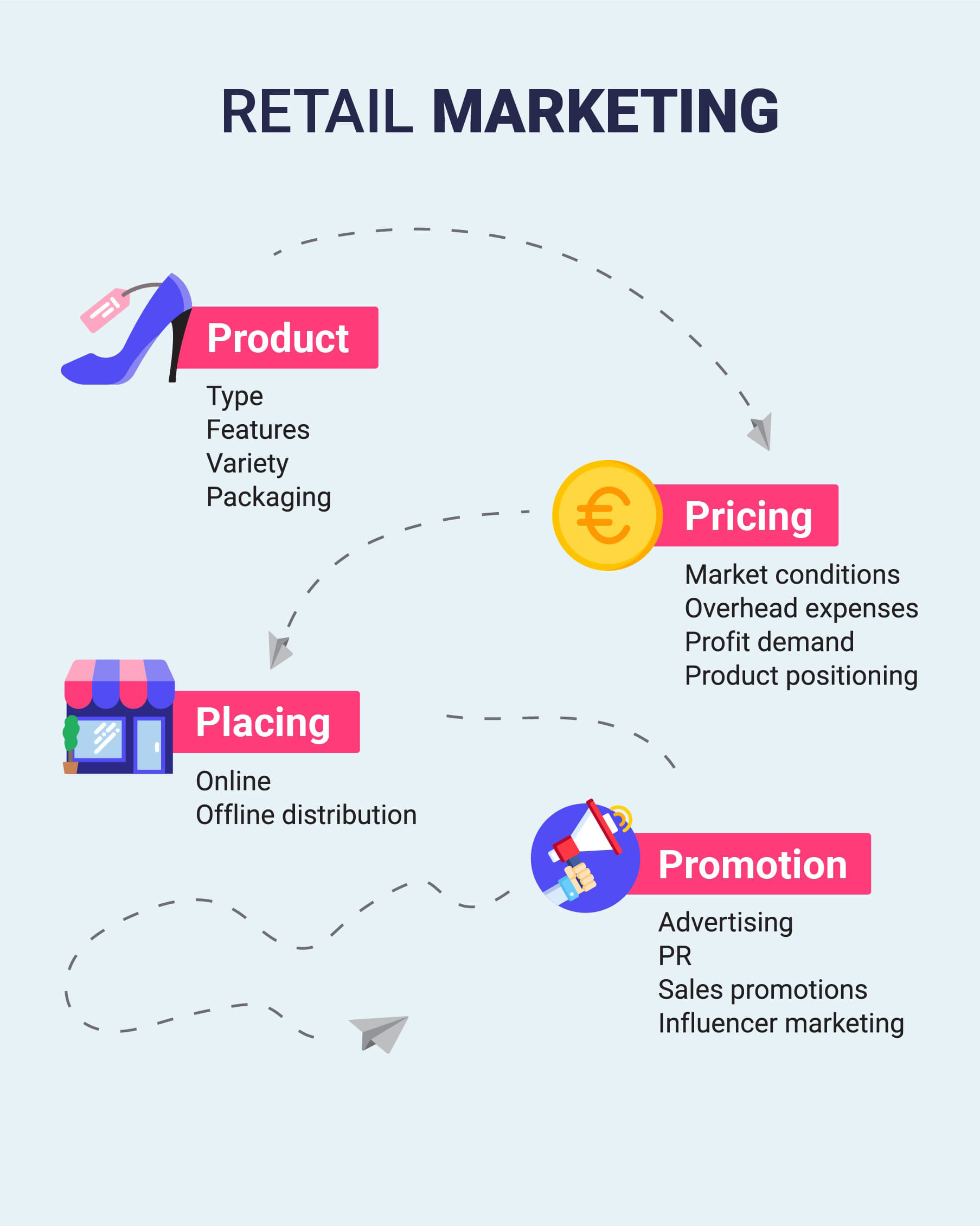
What are the main types of Retail Advertising?
Retail advertising can be categorized into several main types, each with its unique advantages and applications:
1. Print Advertising
Print advertising includes newspapers, magazines, brochures, and flyers. Despite the rise of digital media, print ads can still be effective for targeting specific demographics and local markets.
2. Broadcast Advertising
Broadcast advertising encompasses television and radio ads. These formats offer broad reach and can create a strong visual and auditory impact, making them ideal for brand awareness campaigns.
3. Digital Advertising
Digital advertising includes online ads, social media marketing, email campaigns, and search engine marketing. This type of advertising allows for precise targeting, real-time analytics, and a higher degree of personalization.
4. Outdoor Advertising
Outdoor advertising involves billboards, transit ads, and signage. These ads are effective for reaching a wide audience and are often used to reinforce brand messaging in high-traffic areas.
5. In-Store Advertising
In-store advertising, supported by custom POS systems, includes a variety of effective methods such as point-of-purchase displays, engaging product demonstrations, and strategically placed digital screens within retail locations.
What are the key components of an effective Retail Advertising strategy?
A retail advertising strategy is a plan used to attract new customers and convince them to either shop in-store or place an order online. Acquiring new customers is top of mind for all retailers. To ensure peak performance, the retail advertising strategy needs to be continually assessed. A powerful strategy will help you differentiate your retail business from competitors, highlight what makes you unique, and effectively target your audience.
Here’s what you need to know about crafting a robust retail advertising strategy:
Define Your Target Audience
You need to be extremely specific when describing the audience you want to attract to your store through in-store advertisement. The most critical aspects of defining your target market include gender, age, income, location, marital status, hobbies, wants, needs, and problems they encounter in daily life. The more specific you get, the better you’ll be able to market your products, especially with online retail advertising.
How to Define Your Target Audience:
- Gather data about your current customers to understand who is already buying from you.
- Analyze social media analytics to see who interacts with your brand the most.
- Research your competition to see who is engaging with them.
Define Your Positioning in the Market
Determining how your retail business differs from competitors is a critical step in your marketing strategy. Talking to your current customers can reveal how they perceive your store, highlighting what they like and dislike about your business. Based on this feedback, create a positioning statement that communicates what makes your business unique.
Key Areas for Market Positioning:
- Identify what sets your brand apart.
- Define the market segment you want to attract.
- Develop a clear brand vision.
- Craft a value proposition that reinforces your promise to customers.
Leverage Omnichannel Marketing
When running both a brick-and-mortar and an online store, it’s essential to align branding, messaging, and visuals across all channels to provide a unified consumer experience. Utilize technology to collect shopper data and personalize future shopping experiences.
Best Practices for Omnichannel Marketing:
- Research where potential customers engage with your brand.
- Map out the customer journey to understand buying behavior.
- Start small with new customer paths and adjust based on data.
Establish Promotional Tactics
Combining digital and traditional promotional tactics can attract more visitors both online and in-store. Promote your online presence within your physical store and offer discounts for first-time online orders. Online, identify tactics that attract visitors and convert them into customers.
Questions to Guide Promotional Tactics:
- What time of year is best for discounts to boost sales?
- Will the promotion work best in-store or online?
- Which products are most effective when promoted?
- What type of promotions generate the highest interest?
Set Your Budget
Knowing your budget helps determine which ideas are feasible based on their costs. Assess each idea in relation to your budget to ensure it’s realistic.
Key Aspects for Setting an Advertising Budget:
- Determine the media type (images, animations, or video) for your audience.
- Consider customer lifetime value.
- Align budget with strategic goals.
- Choose the right advertising channels for your strategy.
What are the best practices for Retail Advertising?
1. Keep it simple
The top-performing ecommerce banner ad sizes are not that big, which is why it’s important not to add too much information in that space. If you do that, the text can be overwhelming and hard to read.
The messaging, the imagery, and the CTA need to be clear and as simple as possible. That way, the consumer will be able to understand right away what your ad is about and whether it’s enticing enough so they can click on it.
Even Google recommends using three principles for ad design: be compelling, be concise, and be precise.
2. Use high-quality images
Although online ads are usually quite small in size, especially for the display network, you should still use the best images possible, whether it’s a picture of a product, an illustration, or a stock photo.
At the same time, when exporting the image, don’t forget to keep at maximum 150 kb, which is the file limit for Google’s Display Network.
Here is an excellent example from Pottery Barn when it comes to using high-quality images.

Below you can see an example of how not to design a banner ad. It appears as though the pillows that are being advertised have been taken from a stock photo and are not actually sold by the brand.
3. Test different versions
Sometimes a banner ad will not perform as you expected it to, and you have to start the whole designing process all over again.
You can avoid this situation if you create multiple versions of the same ad from the start and launch them at the same time to see which one performs better.
And this method is called A/B testing.
In an A/B test, you can split your target audience so people see the different versions of your banner ad. It’s recommended to let your banner ads run for at least a week so you can analyze the data and see which one got more clicks and conversions.
When it comes to creating different iterations based on the same design, you may find that this process is time-consuming and repetitive. But that’s only true when you don’t take advantage of creative automation, which helps you scale advertising campaigns faster.
You can improve your production workflow with Creatopy’s Feed Ad Builder, which allows you to generate multiple design variations based on a CSV file.
The CSV file must have all the necessary details of your design with the variants of your product image, headline, description, and CTA that you want to test in your campaign.
Once you upload the file in Creatopy, you’ll be able to bind all this information to your creative and generate multiple versions of your banner ad.
The only step left is to release and test them.
4. Make it stand out
Whether you’re creating an online ad for social media or for display, it’s essential to make it stand out. Your ad needs to make the user stop scrolling, read your ad, and ideally, click on it.
One of the best ways to do this is by the use of color. You can use contrasting colors in the ad, which will inevitably attract attention.
The color of the text can be in contrast with the background you’re using because this will emphasize the message you’re communicating.
At the same time, you need to keep in mind what emotion-specific colors are evoking and what they mean. For example, yellow is an optimistic and youthful color. Pink is often used when advertising products for women or young girls, while black is usually used when marketing luxury brands.
Here is an example of a brand (Nespresso) that used contrasting colors to make their banner ad stand out.
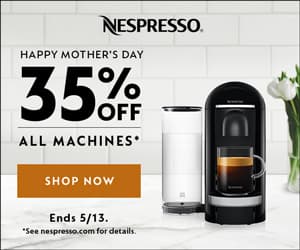
And here’s one from H&M where their CTA blends in with the rest of the text, and it’s even smaller in font size.
5. Think mobile
According to eMarketer, views for display ads on mobile are now viewed more than those on desktop. This clearly shows that every retail ad design you make has to be optimized for mobile first.
So instead of designing an ad by thinking of how it’s going to look on desktop, you need to first create it for mobile devices which are way smaller than a desktop.
After the mobile version is done, you can then scale it and adapt it to desktop.
A good example is the one below. The CTA button is visible because of the contrasting color, there isn’t too much text on the design so you can clearly see what it’s advertised.

The second example is a big no because the font is too small and the CTA is not also visible in this case.
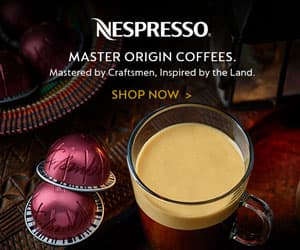
6. Use typography
Typography is an integral part of online advertising because it can draw attention to the vital information you want to send.
Ultimately, it doesn’t matter if you have terrific visuals – your audience won’t even pay attention to your ad if they can’t read the text.
And if people can’t read the text, they won’t click on it because they won’t have a compelling reason to do it.
As a tip, you may want to consider using a style or a bold typeface when you want to make a particular area of your ad stand out.
7. Define a clear frame
When it comes to designing Google display ads, you need to have a clearly defined border. A one-pixel border in a contrasting color will be enough to make a massive difference in the design and make the ad stand out on a webpage.
8. Use dynamic banners
Dynamic (or animated) eCommerce ads, due to their nature, may actually perform better than static ones because they draw people’s attention much more quickly.
With Creatopy, it’s incredibly easy to create an animated banner. In fact, you can do it in just one click.
Whether you start with an already existing template or you can create your ad design from scratch, transforming it into animation is just as effortless in both cases.
9. Take advantage of the power of “free.”
Everyone’s always looking for free stuff, especially on the internet. And whenever we see the word “free” in an ad, it captures our attention because it’s a significant trigger.
The majority of retailers, when advertising their products, don’t give anything for free, and instead, they will tell how much their product costs.
Taking advantage of the psychology of free doesn’t mean that you need to give away your product. Instead, you could easily make free part of an offer, whether it’s about offering free shipping or gift with purchase.
Trends Shaping Retail Advertising
Personalization: Personalized advertising is increasingly important as consumers expect tailored experiences. Utilize data analytics and artificial intelligence to create personalized ads that cater to individual preferences and behaviors, enhancing ad relevance and the shopping experience.
Social Media Influenc: Social media platforms are essential for retail advertising. Influencer partnerships, user-generated content, and interactive ads on platforms like Instagram, Facebook, and TikTok can significantly boost brand visibility and engagement. Use social media analytics to refine targeting and measure effectiveness.
Augmented Reality (AR) and Virtual Reality (VR): AR and VR technologies offer immersive experiences, such as virtual try-ons, 3D product demonstrations, and interactive store tours. These technologies enhance shopping experiences and reduce the likelihood of returns.
Sustainability Messaging: As consumers become more environmentally conscious, sustainability is a key focus in retail advertising. Highlight eco-friendly practices, sustainable products, and corporate social responsibility initiatives to attract ethically-minded consumers and strengthen brand loyalty.
Before I Wrap Up This Article…
I also want to show you a few creative retail advertising examples. I’ll make a brief comment for each one and tell you why they work.
- The first example comes from Sephora. As you can see, the first word that stands out in this display and is “free,” which by itself draws attention. The messaging is simple, clear, and it does not overwhelm the design, which has a pretty clean background.
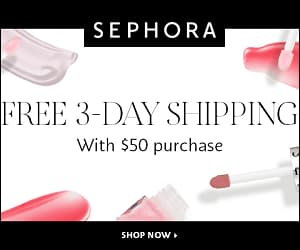
- Below we have another example from Sephora but, in this case, the ad is for a brand that is sold at this store. In only three words, the ad manages to convey emotion (“need”) and action (“now”), which are two essential components of retail advertising. The way it’s created clearly shows that it’s targeted towards women who are passionate about skincare and want to test out the newest releases.

- The third retail advertising example comes from Adidas. This ad is so minimalist and yet incredibly powerful. You have the brand’s logo at the top. Then, you have an image of the product that’s being advertised, which is shown differently – the shoe is placed vertically, rather than horizontally. The only word that appears in the ad, other than what’s written on the CTA button is NMD, which is a sneaker style developed by the brand.
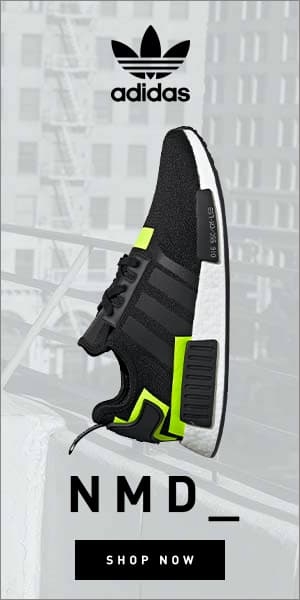
- Ray-Ban does an excellent job at not only telling but also showing that their sunglasses can really suit everyone. Even though the size of the visual is not that big, it managed to show how good their eyewear looks on both women and men. This ad also proves that in just three words, you can send such a strong message that can be easily understood by anyone.
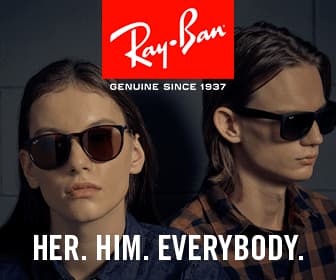
- The difference between this ad by Zara and the other four I talked about is the fact that this one’s CTA urges people to visit their new brick and mortar store, and not the online shop. The imagery is elegant, simple, and it teases the audience by showing only small snippets of some of the clothing items people will be able to find in the store.

Conclusion
You don’t need a big budget to create effective retail online ads. In fact, some of the most effective visuals can be created with online design tools, such as Creatopy.
In the end, it’s essential to simply experiment with many different techniques and ideas so you can figure out what works for you and what triggers a response from your target audience.
Play around not just with static ads, but also with animated ones.
Take a look at what the competition is doing as well and get inspired. Think about how you can address your customers and how to step up your game with online advertising so you can best serve their needs.
Retail marketing has definitely changed in the last few years, but it’s definitely not going to die anytime soon. It has just moved to digital, which is where all retailers should focus their efforts now.
Retail online advertising doesn’t have to be complicated.
You bring your strategy, we deliver the tool.
Give Creatopy a try and see for yourself how easy ad creation is these days.


